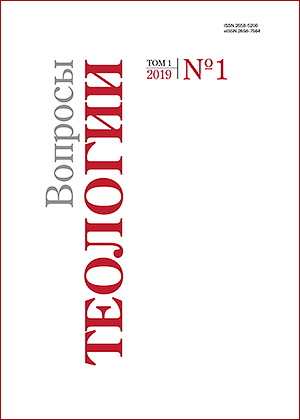The Theology of the Person and the Dynamic Theory of Matter
DOI:
https://doi.org/10.21638/spbu28.2019.102Abstract
The article is devoted to the consideration of the dynamic theory of matter in the light of patristic doctrine. The starting points are statements about the unity of the hypostatic-natural ontology in God and man, about the unity of matter and the focal position of the human personality in the dynamics of the world. Matter is both the “material” and a “teacher” for the human person, reflecting in its dynamics the nature of personal processes and human relations with God and between ourselves. Patristic thought connects the positive or negative nature of the dynamics of matter with the movement to God or away from Him. The reason for the distortion of the dynamics was the fall of our ancestors, which was rooted in the corruption of volition. The resurrected Body of Christ is the starting point of the movement of matter to deification. In the Resurrection of Christ, human nature received new logos of resurrection and incorruption, the implementation of which is associated with the tropos, depending on the direction of the free will. The path to deification, opened for us by Christ, is accomplished in the Church through participation in the Sacraments and ascetic feats and involves the restoration of the hierarchy of human nature conceived by God, where the mind occupies a dominant position. Man is called to bring the matter of the universe to deification, which will finally take place at the end of times.
Keywords:
matter, person, the fall, Christ, the Resurrection, volition, logos, tropos, Divine energies, the sacraments, asceticism, hierarchy, deification
Downloads
References
Downloads
Published
Issue
Section
License
Articles of "Issues of Theology" are open access distributed under the terms of the License Agreement with Saint Petersburg State University, which permits to the authors unrestricted distribution and self-archiving free of charge.




